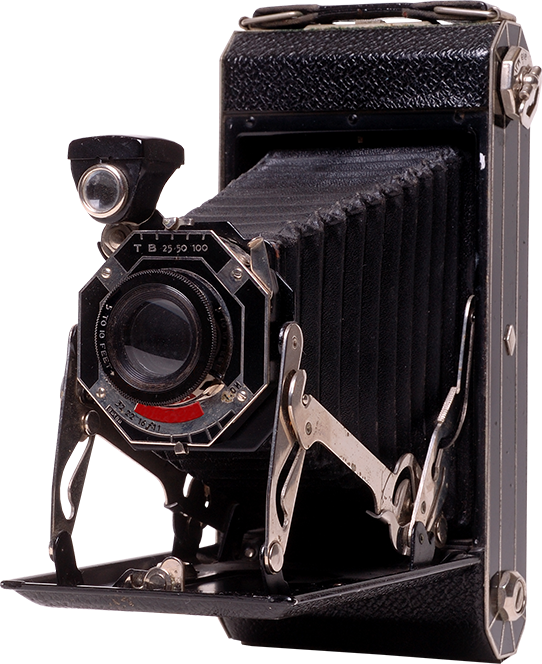Startup Costs – Getting in the Video Game
We heard in the brand management session that it’s important to get into video, so what does that take? Now that another delicious boxed lunch has been consumed, it’s time to find out. Brett Tabke pulls double duty here as moderator and panelist alongside Robin Liss of Camcorderinfo.com and Michael McDonald of iEntry Inc.
Brett jumps right in by asking Mike how they got into video.
Mike says they saw an opportunity to jump right in and be a forerunner. Pubcon last year was their first big event that they did video for. Some of their big hurdles were format, resolution, platform, how to imbed and what content management system to use.
It was a lot of trial and error to decide on all those elements. You have to think about what the most common, most popular formats are and try to offer those. You also need to think about offering them in multiple sizes for different connection speeds. He says it was easier for us to figure out how we could embed them on our own and then allow other people to do the same. We wanted it to be easy for someone we interviewed to be able to put it on his site as well. It’s more of a branding thing.
It’s been commerically viable in terms of paying for itself and putting it on at shows. Google is a big sponsor of conference coverage. It hasn’t paid for itself in terms of office space and equipment, however.
They have approximately 6 full time video people. He notes that it’s nice to be able to use your designers to supplement your video content, so it’s not just two guys sitting there talking. Designers are handy for helping them look dynamic and interesting. They edit using Sony Vegas 8 because 7 doesn’t work with Vista (it did a few weeks ago, but doesn’t anymore.)
Okay, Robin‘s turn.
Their number one rule is that it’s got to be interesting. Video is an illustrated medium, you need to use video to illustrate things. Three minutes of someone talking isn’t interesting. They use video as a marketing tool, as a content piece–they don’t sell ads on the videos very much. They do direct sells but mostly they do contextual ads.
They’ve been doing videos for seven or eight years now. Because the site (CamcorderInfo.com) was about camcorders, they wanted to use videos to show it. They started out using Flash and now they’re using YouTube.
She takes a quick poll on how many people have camcorders and how old they are then quickly disclaimers that her recommendations are editorial based and not ads.
CamcorderInfo.com is, in her opinion, a must read. She started it 11 years ago and they do lab testing for their reviews. As she mentioned before, all their reviews are editorial based and not paid for by the manufacturers (though they do sell ads to them.)
Robin notes that the reality is that almost any entry level camcorder is going to be good enough for the internet. If you have a limited budget, $7-800, use about half for accessories. You probably won’t need the performance if you’re going to be doing Web content because the compression factor is going to ruin it anyway.
You’re looking for video and low light performance. In fact, you want low light performance, low light performance, low light performance. The average room is DARK for a camcorder. There’s no standardized measure so you’re doing to have to look at reviews.
A lot of people are moving toward HD right now and she doesn’t think you need it yet. Again, the compression on the Web is such that you’re going to be paying for quality that you just never see.
When you’re making video online, audio is more important than video. It’s the number one mistake that people make. AUDIO is half the equation. People will sit through shaky video but they’ll leave if it’s terrible audio. So many people just buy the camcorder and shoot something. But if you can’t hear something, you’re not going to keep watching. People will put up with a shaky or grainy picture but not poor audio.
Manual control is very important as well. Once you really get into making videos, you’re going to want to have more control over all the options.
Handling–you don’t want your videos to shake. As much as it’s tempting to buy your camcorder online, you need to go handle the camera and hold it in your hand. When you’re holding two or three lbs out for ten minutes, you’re going to need something comfortable.
Editing Workflow
$5-700 is going to get a good enough camcorder for most people.
The compression for online video is incredibly lossy.
Have we mentioned: low light performance? Because low light performance, low light performance, low light performance.
If you’re not doing any editing, hard drive camcorders are fine, but tape and HDV is much better if you plan to edits. Any post-production should be tape as far as she’s concerned. You’ll also save money in the long run and archiving is easier.
You need to buy a camcorder with a mic jack. They won’t recommend cameras without it and manufacturers have added them back in as a result. There are NO good on camcorder microphones. Even the $5000 ones are worth it.
Headphone jacks are important too because you’re also going to need good and tight headphones so that you can hear the audio no matter what. She likes IFBs because they’re a tight fit (and she gets to look like a secret service agent.)
If you only spend $250 on a camcorder, you’re still going to get better than any digital camera. Buy a camcorder if you’re doing videos.
Recommendations:
Canon HV20 – $900
Sony HD96 – $520
Canon hg10 – $1300
JVC MG130 – $1300
If you only buy ONE accessory, buy a good tripod. People were not made to hold camcorders stable. Plan to spend $150- $300 on tripods. They’ll last forever. Spend a lot of money on it. Look for a fluid head, it’ll make your panning look smooth. Camera tripods aren’t good enough. If you’re doing walking shots, you might want to invest in a steady cam like SteadiCam Jr.
Buy long life batteries, the largest possible. And buy a bag that can handle a lot of tape and batteries. If you’re doing full day shooting, consider a battery belt. Video is a one shot deal, if you’re out of batteries, you’re out of luck.
Make sure your camcorder has a shoe. Sony requires a converter for the camcorder shoe.
Mics: If you’re only going to have one, buy a lavalier mic. $15 wired, $200 wireless. Conference halls are SO loud and full of ambient noise, you’re going to need a lavalier. It’s the only way to get good audio. Other kinds of mics: Shotgun mics are the long ones with the fuzzy covers. Booms are similar but they’re on the long pole. Handhelds are…hand held.
Kits: Sennhiser has a great $300 wireless kit. Look for the frequency. You don’t want two As or they’ll compete with each other.
Use a left/right 1/8in Y adaptor to mix two mics cheaply. That way when you go into post-production, you can edit more easily.
Have an interesting set. White backgrounds are boring. Make an effort. Green screens work great but even lighting is critical.
The world is a dark, dark place. Get lights. Lots of lights. If you have a studio set, you’re going to use three point lighting. You can use household lights or buy a $500 light kit.
Filming Tips:
The rule of 3rds: someone’s eyes are never going to be entirely centered on the screen. You’re going to usually be on the upper bar and probably off to the left or right. This makes more sense with her illustration.
Two camera setups make for great videos. If you’re doing an interview, cut in things that are related as B-Role. Ten seconds for each B-Roll shot.
Never interview someone who is looking at the camera. Have a conversation instead and have the camcorder off to the side.
You can fake it by re-recording the questions after the interview earlier.
Keep panning and camcorder movement to a minimum. Don’t zoom in your videos. Unwind your body instead of winding if you MUST pan. It just looks better. [She demonstrates.]
Generally speaking the $50 software is going to do you just fine. [Brett disagrees, more on this later.]
NO WIPES, No page turns. Cuts only. Fade only to black. It’s a sign of bad video and terrible editors.
Use news tricks like lower 3rds, over the shoulder shots, intros & outros, put your logo in the corner of the video (test it because the compression is terrible.) Saying the site name works much better than graphical reps but use both. Music is great but make sure you have the rights.
You can get pre-made backdrops and graphics from Digital Juice.
Make sure you write people’s names down when you shoot.
…wow that was a lot. Awesome.
Brett jumps in now. He starts off by saying not all the cheap products are you going to do you. His presentation isn’t working so he’s working around it. They built a mini-news studio and he’s going to tell about how they did it.
Think about where you’re going to use the camera. If it’s in the studio and no one will see it, anything is okay. But the bigger, fancier looking ones are better for the conference floor because of the bling factor. The Web is really forgiving, so just about anything will work.
He’s repeating a great deal of what Robin said. He notes that the lights are very hot. Be aware. They also get expensive.
[Robin says that their lights are upwards of $20,000. Don’t buy a reflector, buy foam core. But be careful of fire.]
He emphasizes how important audio is as well. It’s been their biggest money pit.
Software: Adobe Premier, Sony Vegas. Sony has the lower learning curve. It’s about $450-$600. For graphics editing: Photoshop and Illustrator.
Spend the time doing the research. Spend a lot of time doing research.
If you’re looking at a real studio, it’s $25k up.
As for talent? They’re difficult to find, highly competitive, have a high turnover rate –every job is a stepping stone to the next job. It’s expensive for highly qualified help. The cheap alternative is to get college kids. Also very expensive? The tech help–$80 to $100 each.
[Robin says even they hire editors because it’s not efficient for their staff to do it themselves even though they have the expertise. They also take 10 hours to produce 3 minutes of film.]
Biggest mistakes: Not really appreciating how much overhead this was going to require both in time and equipment.
Q&A
Teleprompter
Robin: You can build them for about $100 or buy them for about $200. If you’re doing studio, it’s a great investment.
Brett says they spend about $1500 on theirs.
YouTube is probably your best friend for learning how to. There are tons of videos on everything.
have you done much with transcribing the videos?
Mike: We hand transcribe them if we do them at all. I like the concept and I want to do more of it.
Robin: We don’t do it.
Brett: We’ve got the script so we just post that. You can hire transcribers cheap as well.
How long is optimal?
Mike: Three to five minutes.
Robin: Oh no, three or less. It’s really hard. That’s only 200 or 300 words. You can do multiple segments.
Closed captioning
Robin: There’s no standard yet online. If you’re doing it for broadcast you have to do it legally. Online, you can post a transcript.
Audio: is it worth it to look for an onboard XLR?
Robin: It’s for long distance. Frankly if you’re going to be posting on YouTube, it’s not going to matter. In her opinion, the best to buy if you have the money is the Canon 8-1. (May not actually be what she said…)
26,000+ professionals, marketers and SEOs read the Bruce Clay Blog
Subscribe now for free to get:
- Expert SEO insights from the "Father of SEO."
- Proven SEO strategies to optimize website performance.
- SEO advice to earn more website traffic, higher search ranking and increased revenue.

LEAVE A REPLY









